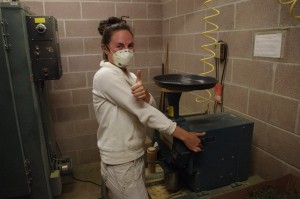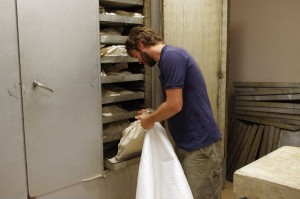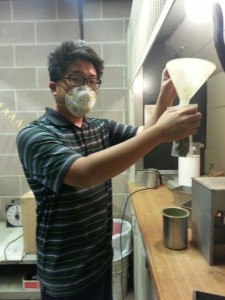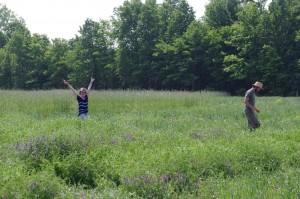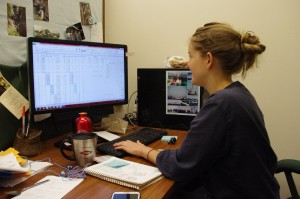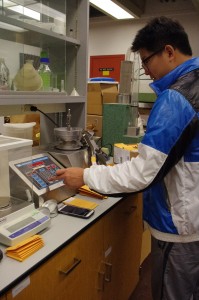It has been about a month and a half since I started my internship in Professor Matt Ryan’s cropping systems research program and so far it has been a very fulfilling experience. On my first day, I met my new colleagues: graduate students Jeff Liebert and Ann Bybee-Finley (both pursuing a master’s degree in agronomy here at Cornell University), and Casey McManus, who started working as a volunteer in the lab but eventually acquired a full-time position in the program. Right away I knew I was going to have a good time working in the lab because my colleagues were some of the most erudite I have met at Cornell.
In the first two weeks, most of our work consisted of cleaning and stocking our brand new lab room, and then visiting the Musgrave research farm to gather field samples for one project looking at the effects of hairy vetch seeding rate and timing on nutrient quality and amount of biomass. One of the first things I learned in the lab was proper field sampling procedures. We used quadrats to square out a representative sample in each plot, and then used both pruners and electric clippers to collect everything within the quadrats. We collected each sample in cloth bags and dried in ovens to prepare them for grinding. After about four or five days, the samples were dry enough to be weighed and ground for nutrient analysis. We spent long hours at the plant grinder processing every single sample. I actually discovered some great music while grinding it out in the grinding room (Thanks Pandora!).
After the first couple weeks of collecting and processing samples from the field, I helped Ann with her forage intercropping project by counting out the seeds of pearl millet, sudangrass, sun hemp, and cowpea for planting in 128 plots with different seed to seed ratios. She taught me how to use the seed counter, which used a laser to drop a certain amount of seeds into coin envelopes for storage. We also inoculated the sun hemp and cowpea seeds about three days before planting.
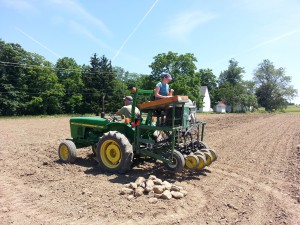 On the few days during which we had not had much of our own lab work to do, we helped Laurie Drinkwater’s team out at the Musgrave research farm. They were doing some work with clover plants, using 15N as a tracer to determine nitrogen levels in the soil after the plants have been clipped from their original plots and turned in new plots. After a half day of clipping clover and shoveling soil, I ended up helping graduate student Zhen Han with her soil emissions project by setting up ground collars (made from orange Home Depot buckets) in each turned clover plot, which were later to be covered with plastic chambers (made from the same buckets, I believe) to collect the emissions. I got a nice sunburn that day — I forgot to get sunblock (I was accustomed to Ithaca’s cloudy weather in the normal school year). Lesson learned.
On the few days during which we had not had much of our own lab work to do, we helped Laurie Drinkwater’s team out at the Musgrave research farm. They were doing some work with clover plants, using 15N as a tracer to determine nitrogen levels in the soil after the plants have been clipped from their original plots and turned in new plots. After a half day of clipping clover and shoveling soil, I ended up helping graduate student Zhen Han with her soil emissions project by setting up ground collars (made from orange Home Depot buckets) in each turned clover plot, which were later to be covered with plastic chambers (made from the same buckets, I believe) to collect the emissions. I got a nice sunburn that day — I forgot to get sunblock (I was accustomed to Ithaca’s cloudy weather in the normal school year). Lesson learned.

